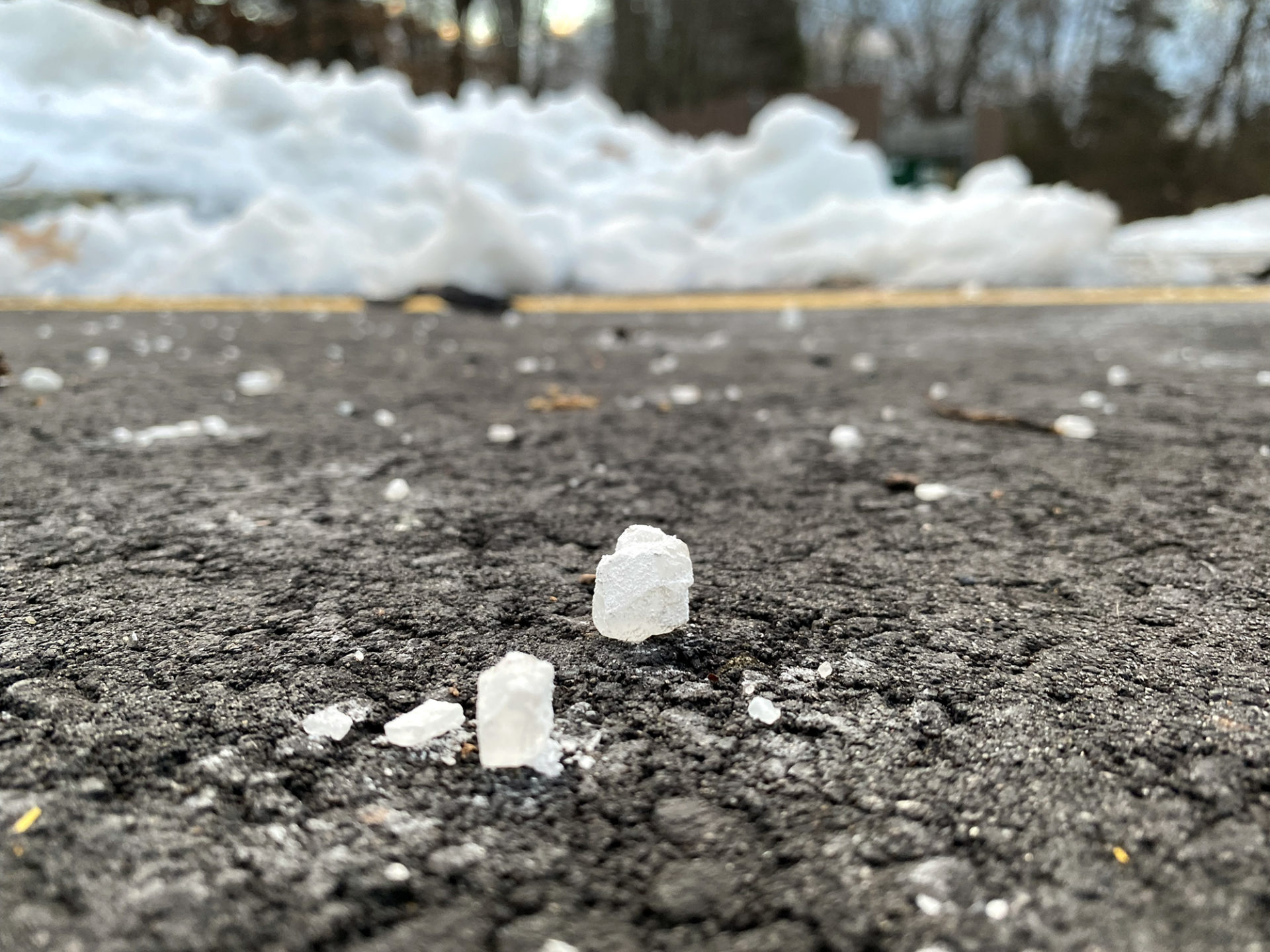When the roads get slippery, our streams get salty!
As local public works departments spread rock salt or pre-emptively wet the roads with brine before major storms, these salts wash into our waterways. Of course, safety is important, but responsible use of salt is also important to keep the waterways healthy.
The salty water can end up in our household drinking water because private wells and public water utilities draw water from local streams, reservoirs, and aquifers. Road salt often soaks into our groundwater, which can directly introduce excess sodium into drinking water and pose a health risk, especially to people on low-sodium diets.
De-icing and road wetting chemicals — sodium chloride, calcium chloride, magnesium chloride, calcium magnesium acetate, and potassium acetate — if not used responsibly, end up degrading the water quality of local streams, harming the microscopic organisms who live in the water and negatively impacting wildlife.
Even after the snow and ice melt away, the salt residue remains on the roads and corrodes the undercarriage of cars and the embedded rebar in roads and bridges. The salts also eat away at residential plumbing and leach lead and other harmful minerals from public water distribution lines. Runoff from piles of rock salt remaining on the road after storms harm nearby waterways.
The Watershed Institute and the New Jersey Watershed Watch Network work with about 300 community volunteers who help monitor and assess the salinity of freshwater streams in the winter throughout New Jersey. They share their results with state officials and contribute to a nationwide study, Winter Salt Watch, conducted by the Izaak Walton League of America.
New Road Salt Regulations
Fortunately, the 2023 MS4 permit now requires municipalities to remove excess salt piles within 72 hours after a storm event. This new requirement was added to the permit because NJDEP is observing the increasing salinity of our freshwater and groundwater and there is a very strong correlation with these increases and roadways. The Watershed Institute is monitoring the effectiveness of this program by surveying members of the community. If you see salt piles remaining 72 hours after a storm, please complete the survey below.


